BMW N55 Engine: The Ultimate Guide
A powerful yet reliable inline-six fitted with a twin-scroll turbocharger that snarls like a beast – does the BMW N55 define what the German legends do best?
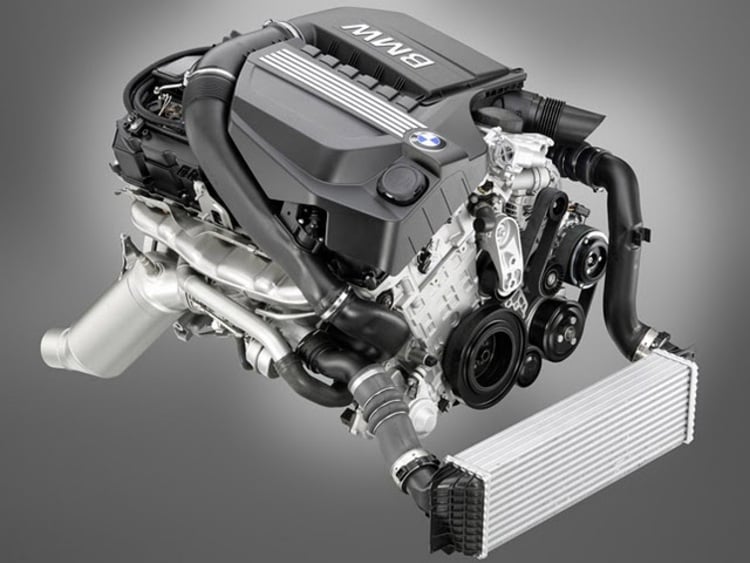
Jump To Section
Introduction
BMW launched the N55 engine as a successor to its not-so-reliable N54 which was launched back in 2006. Let’s start off with a little bit of background into BMW’s inline-six history.
No doubt, the N54 engine was a fantastic inline-six from the German manufacturer. It was the first turbocharged engine BMW mass-produced that came along with both a turbocharger and direct injection.
Although BMW did produce the M102 and the M106, both were turbo inline-sixes, and are quite rare to find.
Otherwise, the company was previously known to produce brilliant naturally aspirated engines that were both reliable and powerful.
Engine Specs
Engine type / Cylinders / Valves per cylinder: VANOS / Inline 6 / 4
Engine management system: MEVD 17.2 Direct injection
Induction system: Twin scroll turbo Valvetronic
Power (SAE net): 365 @ 6500
Torque: 343 lb.-ft. (465 Nm) @ 1400-5560 rpm
Boost pressure / Overboost: 0.6/0.8 bar
Displacement: 2979 cm3 / 181.8 inch3
Stroke: 89.6 mm / 3.53 inch
The BMW N55 engine is a younger brother to the N54 and first came out in 2009.
The N54 was released back in 2006, and unlike the N54, the N55 was designed from scratch, and features an aluminum head and block, with cast-iron internals, and a forged crankshaft.
There were a couple of variants that were built, but the main thing that made this motor stand out was the use of a twin-scroll turbocharger – signified by the TwinPower Turbo lettering on the engine.
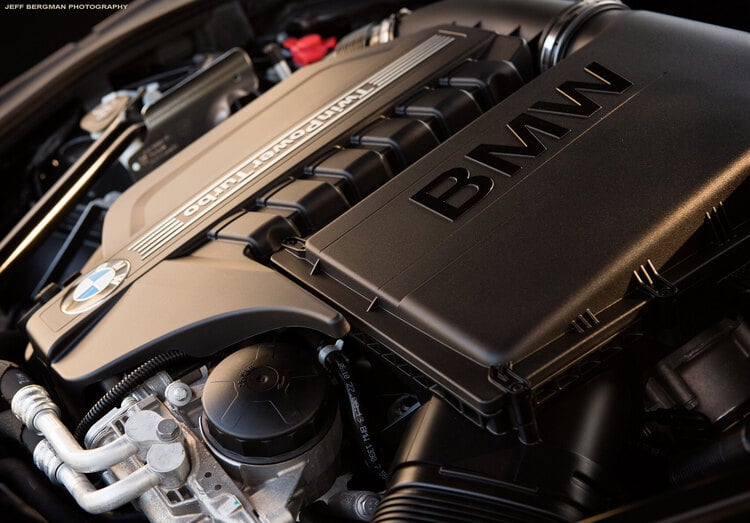
The N55 made its way into most of BMW’s cars after 2010, including the 535i, 335i, and 135i.
Do not confuse these cars with the M3, M4, or the M5, because those cars run on S-series engines, which are factory-tuned, high-performance versions of the same block. Read about the differences between the M3 vs the M4.
Whether you want to know more about tuning and reliability concerns, or you want comprehensive comparisons for the BMW N55 engine, you’ll find that this is the ultimate guide to the BMW N55 engine.
So keep reading as this guide covers everything you need to know.
BMW N55 Engine
As mentioned, the N55 aluminum throughout the design, alongside a total displacement of 2979 CCs and is capable of producing power between the 300-370 horsepower range.
Not too shabby, right? Especially considering a 2JZ-GTE with its twin-turbo setup produces 320 horsepower (in stock form, of course!)
The compression ratio is kept at 10.2:1. The BMW N55 engine also comes with Valvetronic (which is basically a fancy name for variable valve lift), and VANOS (Variable valve timing).
Both of these are incredibly useful in maximizing power delivery across the rev meter.
Oil usage in this engine is 6 liters of the 5W-30 or the 0W-40, but 0W-40 is still the OEM recommendation.
We thought it cool to mention that the oil pan is also made out of cast aluminum, and the cast iron internals are specially designed to be efficient and strong.
The N55 is also tuned for a lower boost. Maybe this is why BMW opted for the cast internals, and not forged ones.
However, the internals is still good enough for 500 WHP, and the single turbo with twin scrolls is tunable to 20psi, without risking damage.
That translates to around 1.4 bars of boost – almost double the stock!
The 335i is probably a fan favorite, being released alongside the legendary M3 model, to feature the N55. You can read about a special drifted.com comparison between the two in our 335i vs m3 article.
What BMWs Have The N55 Engine?
So, what cars will you find the N55 in?
Well, most cars post-2010 with a _35i will have one, since both _35i’s and _40i’s are turbo variants. The newer model _40i runs on a B48, which is the successor to the BMW N55.
All models with the N55 engine are listed below:
· 2009-2017: 535i
· 2010-2013: 335i
· 2010-2013: 135i
· 2010-2017: X3 xDrive35i
· 2011-2013: X5 xDrive 35i
· 2011-2015: 335i
· 2011-2014: X6 xDrive 35i
· 2012-2015: X1 xDrive35i
· 2013-2016: 435i
· 2014-2018: X5 xDrive 35i
· 2014-2019: X6 xDrive35i
· 2014-2016: X4 xDrive 35i
· 2013-2016: M235i
· 2012-2015: 740i/Li
· 2011-2018: 640i
· 2016-2018: BMW M2
Amongst this list, the two cars to keep an eye out for are the 335i and the M2, and for good reason too. The 335i has an overboost feature that pushes the turbo to 11.6psi with 370 lb. ft of torque. The 335i shares the same chassis as the M3 has a stiffer suspension and drives pretty smoothly on the road.
The M2 is another great car. The engine that comes with this special motorsport version features forged internals, and pushes out a whopping 365 HP, the best BMW has squeezed out of the N55.
The 235i also makes a special feature in the top 3 sedans with a BMW N55 engine, with a power output of 325 HP.
With the stock power figures, an N55 is definitely a powerful engine, but we know that you guys do not like keeping your BMWs stock, so keep reading on.
BMW N55 Tuning & Performance Upgrades
Starting right away, the BMW N55 engine is an all-aluminum design, meaning that it’s sturdy and can withstand a proper tune without blowing your engine, or damaging the internals.
Aluminum blocks are lightweight, and with the gray cast iron sleeving in the cylinders, the N55 can easily be pushed to deliver 400+ HP at the dyno, with a few decent bolt-on mods.
The twin-scroll turbocharger is used with the engine to ensure power delivery remains smooth. Remember, BMW wanted reliability more when they were thinking of the N55. With a good remap of the upgraded Bosch ECU however, it’s possible to pull out another 60 HP, making the N55 an even more powerful motor.
The twin-scroll stock turbo can be tuned at 20+ psi, but it’s quite a small turbo. Smaller turbos are unable to move large volumes of air, and a boost higher than 20+ psi is sure to cause damage in the longer run.
We at Drifted believe in the big guns, so we recommend upgrading the stock turbo with a single larger turbo. And if you’re wanting to upgrade the turbo, a Stage 2 Turbo kit should be what you’re thinking of. PureTurbos and Vargas are the two manufacturers that focus on turbochargers, but there’s a lot of other stuff to upgrade once you’re thinking of upgrading the turbo on the N55.
A stage 2 turbo will set you up in the 450-500 WHP range, and the stock internals need not be replaced at this point.
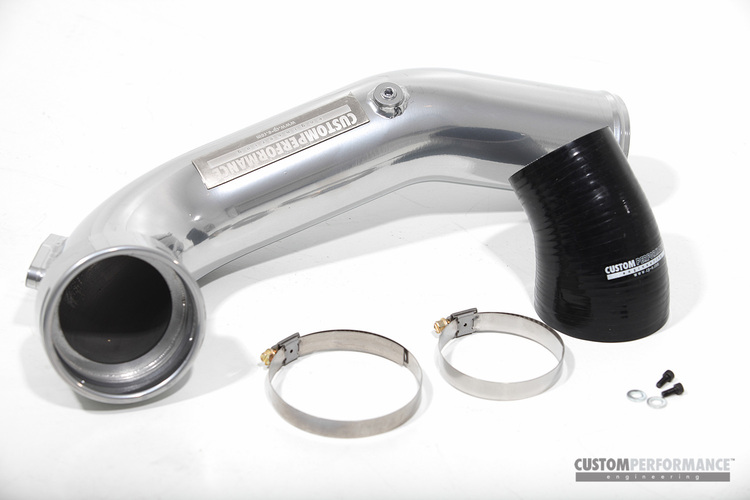
The first thing that needs to go is the stock inlet pipe. The inlet pipe or the charge pipe on the N55 is plastic, simply because BMW was trying to save weight, but plastics tend to degrade in the long run. Replacing is the only way to go here, and a good inlet pipe upgrade kit is offered by VRSF for $130.
It is a good idea, to also change all of the piping of the intercooler, along with the intercooler itself. The intercooler is supposed to keep the turbo cool; think about it as another dedicated radiator for the turbo. Oh, and you might already know, turbos generate a great deal of heat.
Currently, a great many options are available on the market for performance-spec intercoolers. Manufacturers like VRSF, CSF, Wagner, and Mishimoto are all on the market, and all are reliable for that matter.
The CSF is the recommended air intercooler and costs around 600$, while others might need a bit of custom piping to fit under the bumper for a clean install. Your stock intercooler may also work just fine if you’re not looking for over-the-top boost figures.
Another cool upgrade is the addition of an aftermarket air intake. Adding this will bump the HP figure by +10, the correct manner being retaining the OEM duct for a fresh supply of cold air through the front grill. BMS makes such intakes. Be sure to check your car model before you get one.
BMW N55 Reliability & Common Problems
We’ve already mentioned the problem with the charged pipe design. The plastic pipe will last you around 30k-70k miles if running on stock boost, but the important thing is more boost means more heat which equals a higher chance of the pipe cracking. And the tough part is your TMAP sensor, which measures the pressure and temperature of intake air, may become damaged in the process.
The N55 engine is one of BMW’s reliable engines since BMW greatly improved on its turbo inline six design. However some problems are still perceived, but we don’t blame BMW for the lack of knowledge, just for their over-the-top weight savings while designing the N55.
The N55 has a plastic valve cover, so that is again something that should be replaced as soon as possible. Even BMW engineers recommend changing the entire valve cover along with the valve cover gaskets, but we at Drifted prefer an aluminum counterpart, which should’ve been the choice in the first place.
You can purchase one for around 250$ from Mitzone with the gasket and seals included. Otherwise be ready to smell some burning oil, with potential damage to your manifolds.
Once you’re pushing a bigger turbo in the N55, or tuning for more power, the general rule of thumb is to change your spark plugs to colder ones, and we recommend using NGK one-step colder plugs if you’re planning on a 500+ HP build.
These operate at one heat range colder, and significantly reduce the chance of damaging your ignition coils, which would lead to engine misfires. We also recommend changing them after 15,000-25,000 miles, since the BMW N55 engine is notorious for burning through spark plugs and ignition coils pretty quickly.
Ignition coils therefore should also be swapped, replacing the OEM ones from Bosch, with ones from Eldor (costing 27$ each), and these are capable of delivering power more effectively, even at 600 HP.
Water Pump failure is also not unheard of in the N55, mainly because the OEM design is based on a composite impeller, which again causes it to fail at any time. Again, the disaster of trying to make the engine bay lighter.
Anytime might come at as low as 30k miles, so we recommend the Pierburg OEM-spec, metal water pump which will cost you around 350$. This will ensure your coolant stays in, and your fans stay quiet.
The stock fuel system on the N55 can be a big limiting factor. The system caps out at the mid-400 horsepower range, and even then is quite likely to cause failures in the long run. The N55 has both a high and a low-pressure fuel pump feeding solenoid-based fuel injectors.
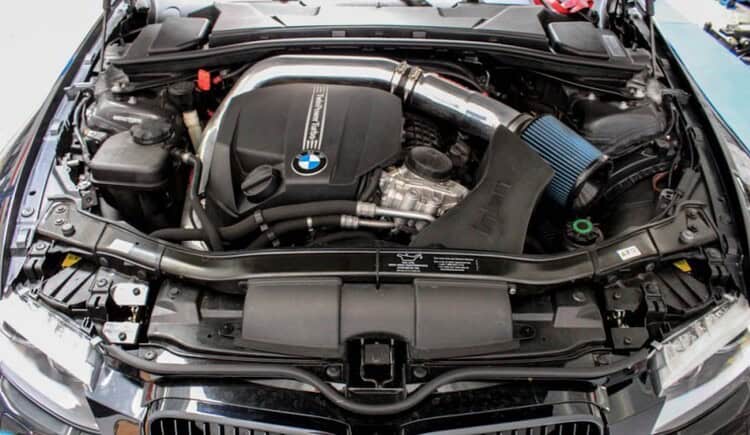
All these three elements were not perfected till 2013 and may need replacement with either Stage 2, or aftermarket parts. The fuel pumps may be replaced by Fuel It!, which offers a complete solution to the problem.
The solenoids, however, need to be replaced timely, since they have a habit of sticking open, and spraying fuel continuously inside the cylinder. This can lead to an engine fire, and you may require an upgrade to Stage 1 or Stage 2 options if you’re planning for the bigger.
The N55 uses a chain instead of a belt to connect the crankshaft and the camshaft. The crankshaft on the N55 is also made from forged iron, another cool gesture by BMW that the N55 is no doubt a serious engine.
But the use of plastic in integral components has certainly limited it. Plastic rail guides are used for the timing chain, and this causes the hydraulic tensioner to break the chain.
On high boost, more stress is added to the timing chain, and this increases the chance of failure. If you’re not looking to spend 12+ hours every 10k miles, we recommend upgrading both the tensioner and the rail guides to better ones.
The last thing worth mentioning is getting your oil cooler, along with the thermostat replaced.
The stock cooler is only good enough for a regular day; on the track, you might notice engine temps running higher. This is also due to the stock thermostat, which opens at 120 degrees.
Replacing the cooler with a CSF bolt-on upgrade is definitely worth it, although Evolution Raceworks offer a full kit too.
The temperature sensor can be replaced by the Burgers Motorsport one, which opens the oil flow at 95 degrees. This is the way to go if you’re not too keen to replace the entire cooler.
You could even opt for the machined sensor that Mosselman Turbo Systems are offering; a premium choice if you’re thinking of using the OEM Cooler.
BMW N55 vs N54
BMW started from scratch when they were designing the N55 since the N54 was their first production turbo engine, and a lot of components had minor flaws. These were later perfected with the N55, and looking even further down, even the N55 got updated with the B58, which is even better than the N55.
The N55 has a single, twin-scroll turbo; something that is considered a unique piece of engineering. It solved a lot of problems that the N54 had, including misfires and exhaust pullbacks. The N54 had a twin-turbo design, ran on higher boost, and faced turbo lag; the N54 is free from all this.
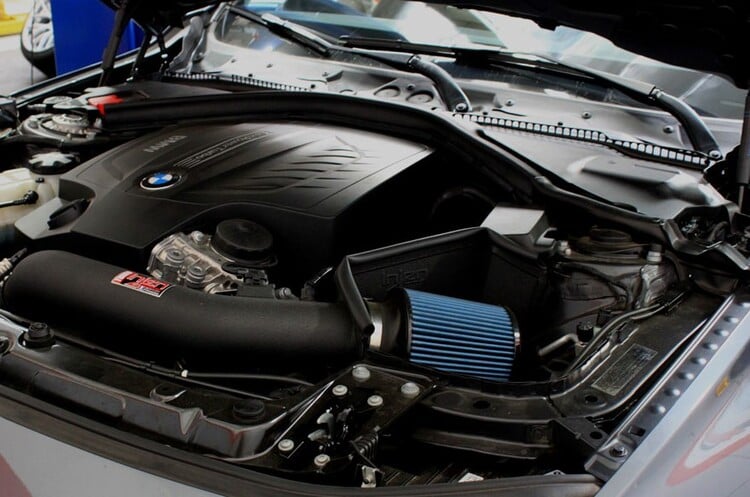
The internals on BMW’s N54 are made of forged iron, while those on the N55 are cast iron. Even so, the N55 had newly designed pistons, rods, and other internals, which actually makes them stronger.
Overall, the N55 is a much more reliable option than the N54 engine, but the N54 just might be a little more mod-friendly.


 (18 votes, average: 3.56 out of 5)
(18 votes, average: 3.56 out of 5)




















